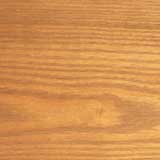|
Found in furniture, posts, fence rails, lumber, millwork, paneling, moldings, windows, doors, door frames, kitchen cabinets, kindling, boxes, and boats and for cooperage. Sassafras is a well known and aromatic hardwood. It was used by the Indians for dugout canoes.
The name is a Native American term picked up by the French and Spanish. During the 1600's, the roots were gathered for export to England where Sassafras tonic was popular. The colonists used the wood to build forts. The flowers and bark are still used to make Sassafras tea. Cajun-Creole food lovers will know this tree's leaves as the ingredient file-gumbo. The oil perfumes soap and is used in medicine. Even twigs are plucked by hikers to kill their thirst, as the twig stimulates saliva. It is also a source of colonial orange dye for fabric. Sassafras resembles Ash or Chestnut and is easily confused with Black Ash. The sapwood is light yellow and the heartwood varies from dull grayish-brown to dark brown, sometimes with a reddish tinge. The creamy tan sassafras has a distinct darker brown straight grain pattern. Also known as the Golden Elm, this moderately heavy and moderately hard wood is easy to work with and takes a finish well. It glues well and holds screws better than nails. It is resistant to decay in exposed, damp conditions so it is often chosen for fence posts and the window sills of houses. Sassafras is very much like Walnut for carving purposes. It has a wonderful aroma while being carved. It is used in furniture making and furniture carving. It is seldom seen as veneer as a result of low demand. It is moderately weak in bending and endwise compression but is quite high in shock resistance. It is found scattered in limited amounts throughout the eastern half of the United States from southeastern Iowa and eastern Texas eastward, including Tennessee. In the Southern areas, the tree can reach a height of 80 feet and is usually found in small groves alongside Persimmon, Oak, Sweetgum, Dogwood, Ironwood and Pawpaw. It is a pioneer species so it is often is one of the first to grow in an abandoned field, spreading asexually by root runners. |

